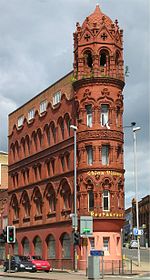Roman Catholic Archdiocese of Birmingham

The Archdiocese of Birmingham is one of the principal Latin Church diocese of the Catholic Church in England and Wales. The archdiocese covers an area of 3,373 square miles (8,740 km2), encompassing Staffordshire, the West Midlands, Warwickshire, Worcestershire and much of Oxfordshire as well as Caversham in Berkshire. The metropolitan see is in the City of Birmingham at the Metropolitan Cathedral Church of Saint Chad. The metropolitan province includes the suffragan dioceses of Clifton and Shrewsbury. The archbishop is Bernard Longley, who was named the ninth Archbishop of Birmingham on 1 October 2009. He succeeds the Archbishop of Westminster, Cardinal Vincent Nichols (2000–09). Longley was installed as Archbishop of Birmingham at the Metropolitan Cathedral and Basilica of Saint Chad on 8 December 2009, the Solemnity of the Immaculate Conception and one of the patronal feasts of the archdiocese, St Chad being the other.
Excerpt from the Wikipedia article Roman Catholic Archdiocese of Birmingham (License: CC BY-SA 3.0, Authors, Images).Roman Catholic Archdiocese of Birmingham
Shadwell Street, Birmingham Jewellery Quarter
Geographical coordinates (GPS) Address Nearby Places Show on map
Geographical coordinates (GPS)
| Latitude | Longitude |
|---|---|
| N 52.4856 ° | E -1.8987 ° |
Address
The Metropolitan Cathedral and Basilica of St Chad
Shadwell Street
B4 6HJ Birmingham, Jewellery Quarter
England, United Kingdom
Open on Google Maps










